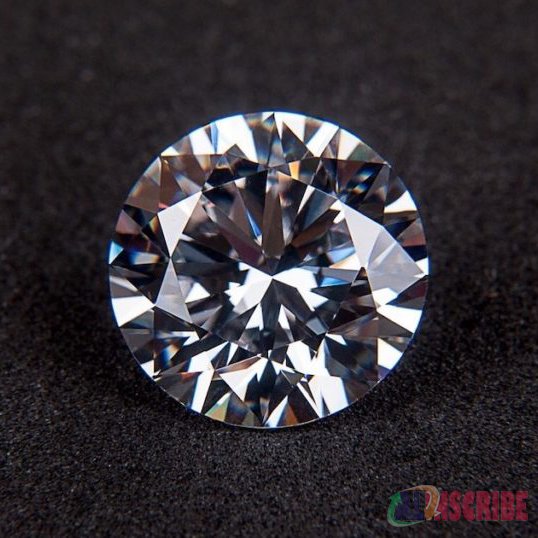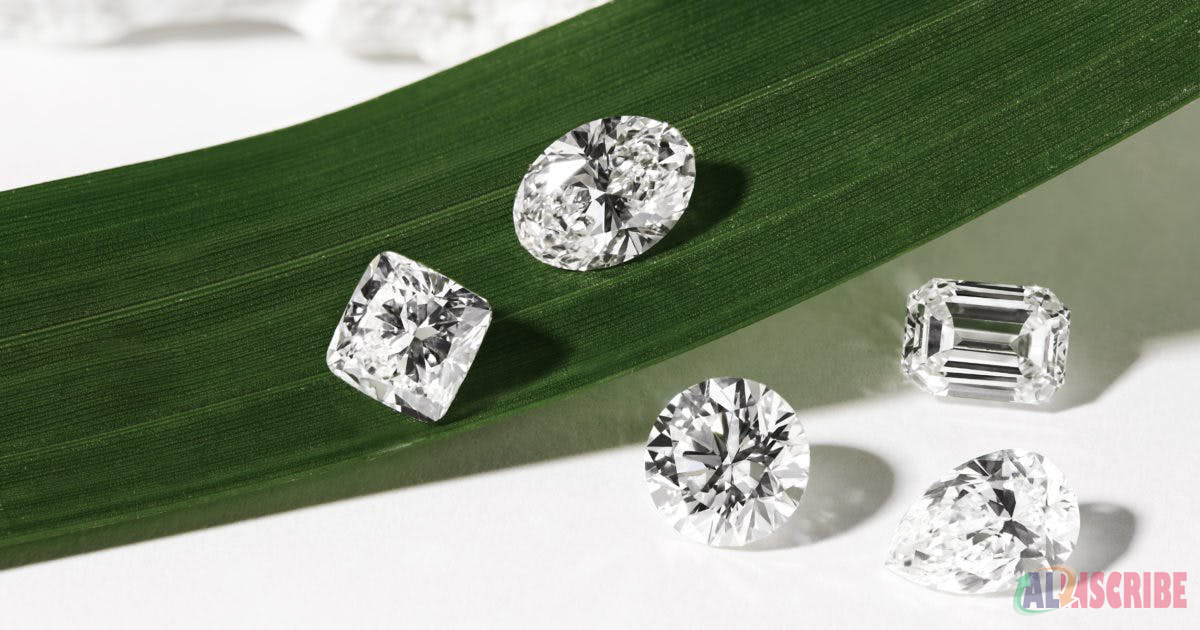What Is A Cultured Diamond?
Author: rohitmeroxio
Published in: Jewellery Products

Cultured diamonds, also known as lab-grown or synthetic diamonds, have gained immense popularity in recent years as a sustainable and ethical alternative to natural diamonds. These man-made gems exhibit the same physical, chemical, and optical properties as their natural counterparts, but they are created in controlled laboratory environments. In this article, we will explore the fascinating world of cultured diamonds, delving into their creation, advantages, disadvantages, environmental impact, and their place in the jewelry industry.
Introduction to Cultured Diamonds
Cultured diamonds are created using advanced technology that replicates the natural diamond-growing process. They are composed of carbon atoms arranged in a crystal lattice structure, just like natural diamonds. The key difference lies in their origin. While natural diamonds form deep within the Earth's mantle over millions of years, cultured diamonds are produced in a matter of weeks in specialized labs.
The Science Behind Cultured Diamonds
Cultured diamonds are formed through two primary methods: High Pressure High Temperature (HPHT) and Chemical Vapor Deposition (CVD). HPHT simulates the extreme conditions beneath the Earth's surface, while CVD involves the deposition of carbon atoms onto a substrate. Both processes yield diamonds with exceptional purity and clarity.
How Are Cultured Diamonds Made?
To create cultured diamonds, a small diamond seed crystal is placed in a growth chamber. Carbon-rich gases or carbon sources are introduced, and under carefully controlled conditions, the carbon atoms bond to the seed crystal, gradually building the diamond's structure. This process can take several weeks, during which the diamond grows layer by layer.
Key Differences Between Cultured and Natural Diamonds
While cultured and natural diamonds share many similarities, there are essential distinctions to consider. Cultured diamonds are typically more affordable, and their origin is traceable, ensuring ethical sourcing. Natural diamonds, on the other hand, have unique characteristics due to their geological formation.

Advantages of Cultured Diamonds
Cultured diamonds offer several advantages. They are more environmentally friendly, as their production requires fewer resources and has a lower carbon footprint. Additionally, they are free from the ethical concerns associated with conflict or "blood" diamonds.
Disadvantages of Cultured Diamonds
On the downside, cultured diamonds may lack the sentimental value and rarity that natural diamonds hold. Some purists also argue that they do not possess the same mystique as diamonds formed over millions of years.
The Environmental Impact of Cultured Diamonds
The production of cultured diamonds is far less harmful to the environment. It generates fewer greenhouse gas emissions and reduces the need for destructive mining practices, making it a more sustainable choice.
Ethical Aspects of Cultured Diamonds
Cultured diamonds are conflict-free, which means they do not contribute to the exploitation or suffering of workers in diamond mines. They provide a transparent and ethical alternative for those concerned about the human rights issues surrounding the diamond industry.
Cultured Diamonds in the Jewelry Industry
Cultured diamonds are making their mark in the jewelry industry. Many renowned jewelers and designers are incorporating them into their collections, offering consumers a choice between natural and lab-grown diamonds.
The Growing Popularity of Cultured Diamonds
The demand for cultured diamonds is on the rise, as consumers become more conscious of sustainability and ethics. Their affordability also makes them an attractive option for those looking for high-quality jewelry.
Pricing and Affordability
One of the most significant advantages of cultured diamonds is their competitive pricing. They are often more affordable than natural diamonds of similar quality, making luxury jewelry accessible to a wider audience.
Are Cultured Diamonds Real Diamonds?
Cultured diamonds are indeed real diamonds. They share the same physical and chemical properties as natural diamonds, and their authenticity is recognized by gemological institutions and certification bodies.
Maintaining and Caring for Cultured Diamonds
Cultured diamonds require the same care and maintenance as natural diamonds. Regular cleaning and proper storage can ensure their brilliance and longevity.
The Future of Cultured Diamonds
As technology advances and consumer preferences evolve, cultured diamonds are poised to play a more significant role in the jewelry industry. Their sustainability and ethical appeal will likely continue to drive their popularity.
Conclusion
In conclusion, cultured diamonds represent a remarkable innovation in the world of gemstones. These lab-grown diamonds offer a sustainable, ethical, and affordable alternative to natural diamonds. They are real diamonds in every sense, sharing the same chemical composition and brilliance. As the demand for sustainable and ethically sourced products grows, cultured diamonds are set to shine even brighter in the jewelry industry.

FAQs
1. Are cultured diamonds less valuable than natural diamonds?
Cultured diamonds are generally more affordable than natural diamonds of similar quality. While their monetary value may be lower, they hold great value in terms of sustainability and ethics, making them an attractive choice for many consumers.
2. How can I tell if a diamond is cultured or natural?
To distinguish between cultured and natural diamonds, you can check for certification. Gemological institutions provide certificates that specify the origin of the diamond. Additionally, experienced jewelers can often identify the differences between the two types based on their unique characteristics.
3. What is the environmental impact of diamond mining?
Diamond mining can have a significant environmental impact, including deforestation, habitat destruction, and water pollution. Cultured diamonds, in contrast, are produced with a considerably lower environmental footprint, making them a more eco-friendly option.
4. Can cultured diamonds be passed off as natural diamonds?
While it's possible for unscrupulous individuals to attempt such deception, reputable jewelers and gemologists can easily differentiate between cultured and natural diamonds. Moreover, cultured diamonds are typically accompanied by certification that clearly states their origin.
5. Are there any famous jewelry brands using cultured diamonds in their designs?
Yes, several renowned jewelry brands and designers have embraced cultured diamonds in their creations. These brands value the sustainability and ethics associated with cultured diamonds and offer consumers a choice between natural and lab-grown options.
Summary
In summary, cultured diamonds have emerged as a remarkable alternative to their natural counterparts, offering a sustainable, ethical, and affordable choice for consumers. These lab-grown gems possess the same chemical and physical properties as natural diamonds, with the key difference being their origin. The article has explored the science behind cultured diamonds, their creation methods, advantages, and disadvantages. It has highlighted the environmental benefits and ethical considerations, shedding light on their growing popularity in the jewelry industry.
Cultured diamonds are not only real diamonds but also represent a more responsible and transparent option in the world of jewelry. As consumer demand for sustainable and ethically sourced products continues to rise, the future of cultured diamonds appears to be sparklingly bright. Their affordability and environmental consciousness make them a valuable addition to the gemstone market, bridging the gap between luxury and responsibility in the jewelry industry.
Cultured diamonds, also known as lab-grown or synthetic diamonds, have gained immense popularity in recent years as a sustainable and ethical alternative to natural diamonds. These man-made gems exhibit the same physical, chemical, and optical properties as their natural counterparts, but they are created in controlled laboratory environments. In this article, we will explore the fascinating world of cultured diamonds, delving into their creation, advantages, disadvantages, environmental impact, and their place in the jewelry industry.
Article Comments
Articles Search
Sponsor
There are zero sub-categories in this parent category.
There are zero sub-categories in this parent category.
There are zero sub-categories in this parent category.
















